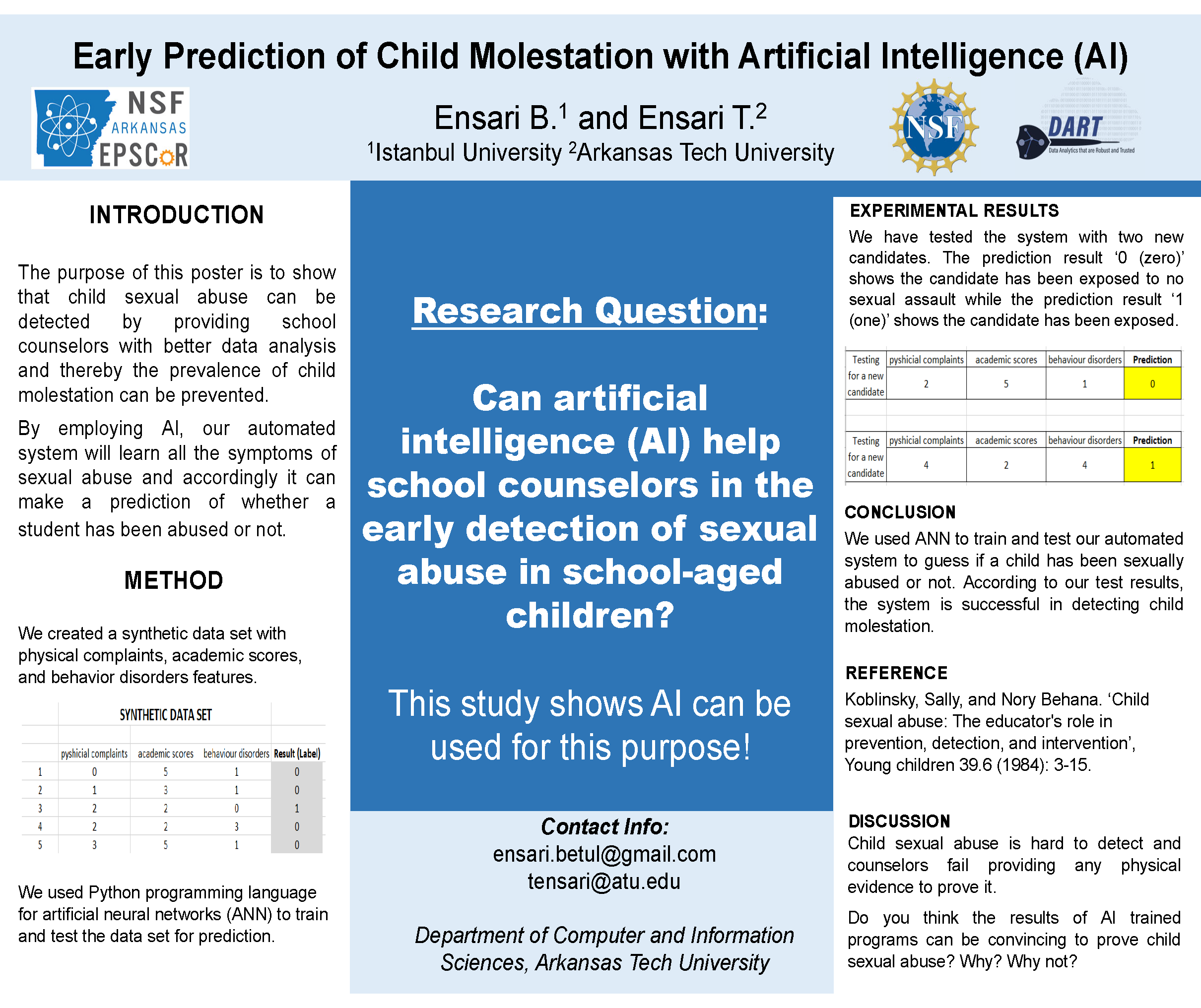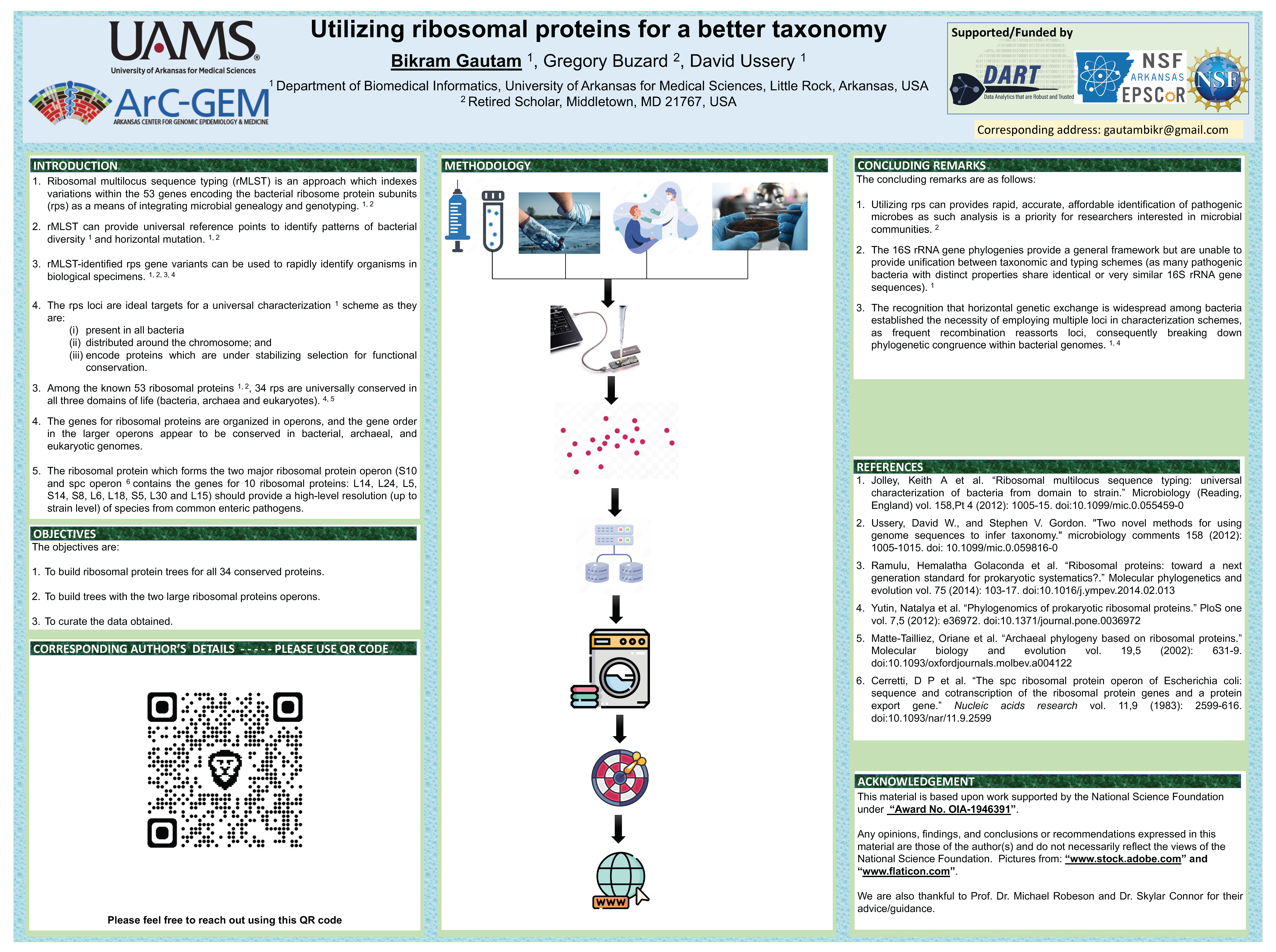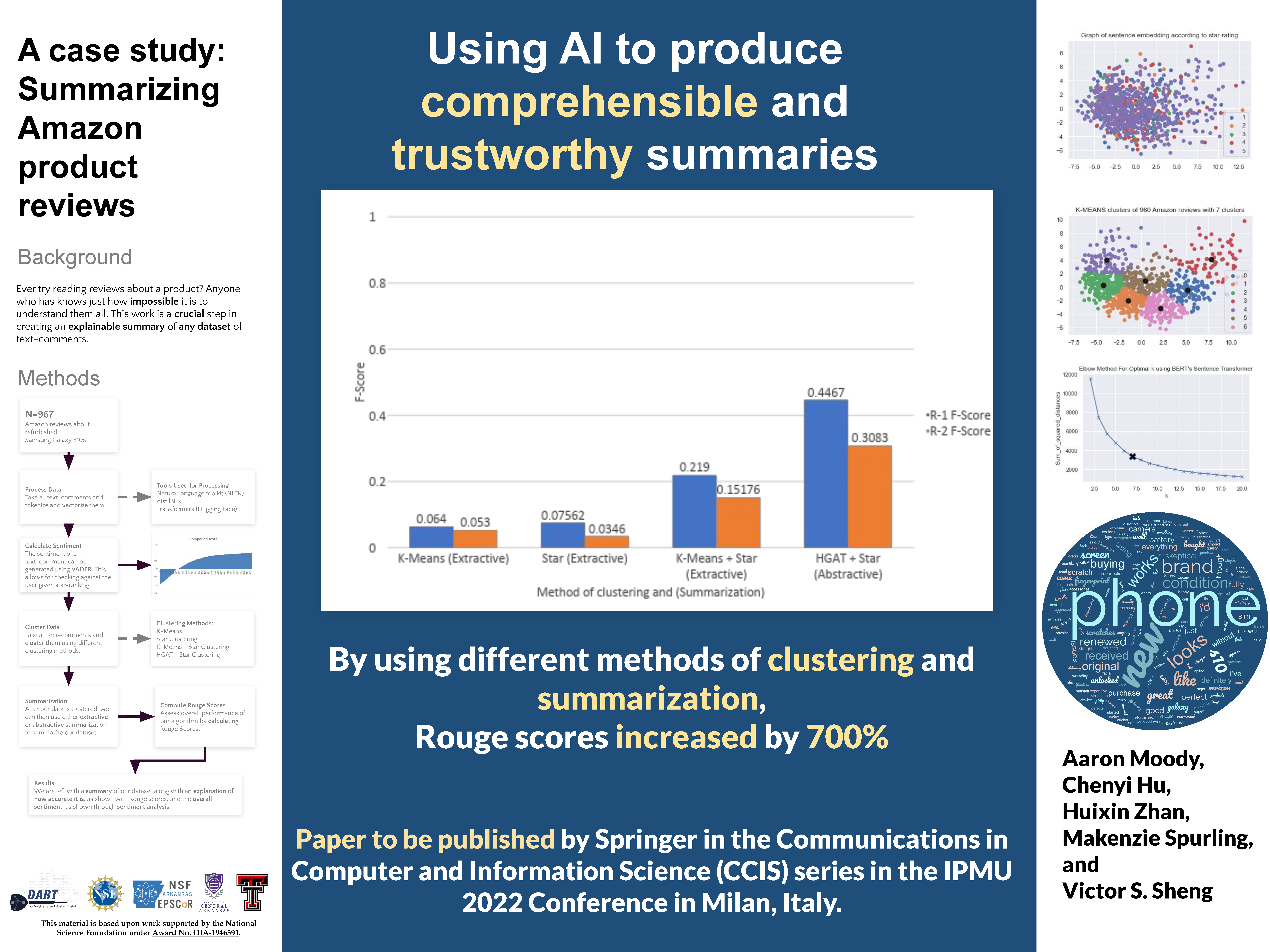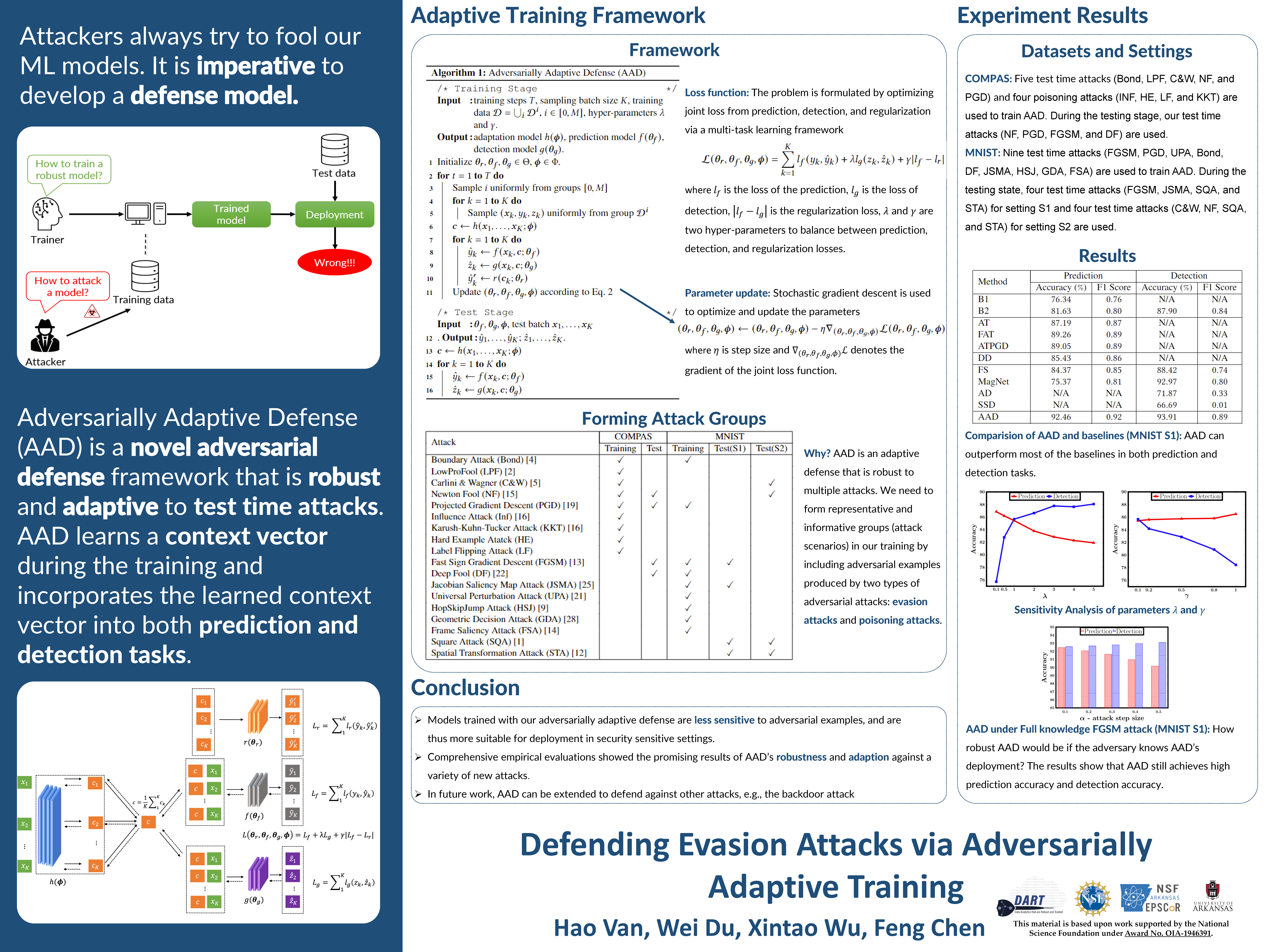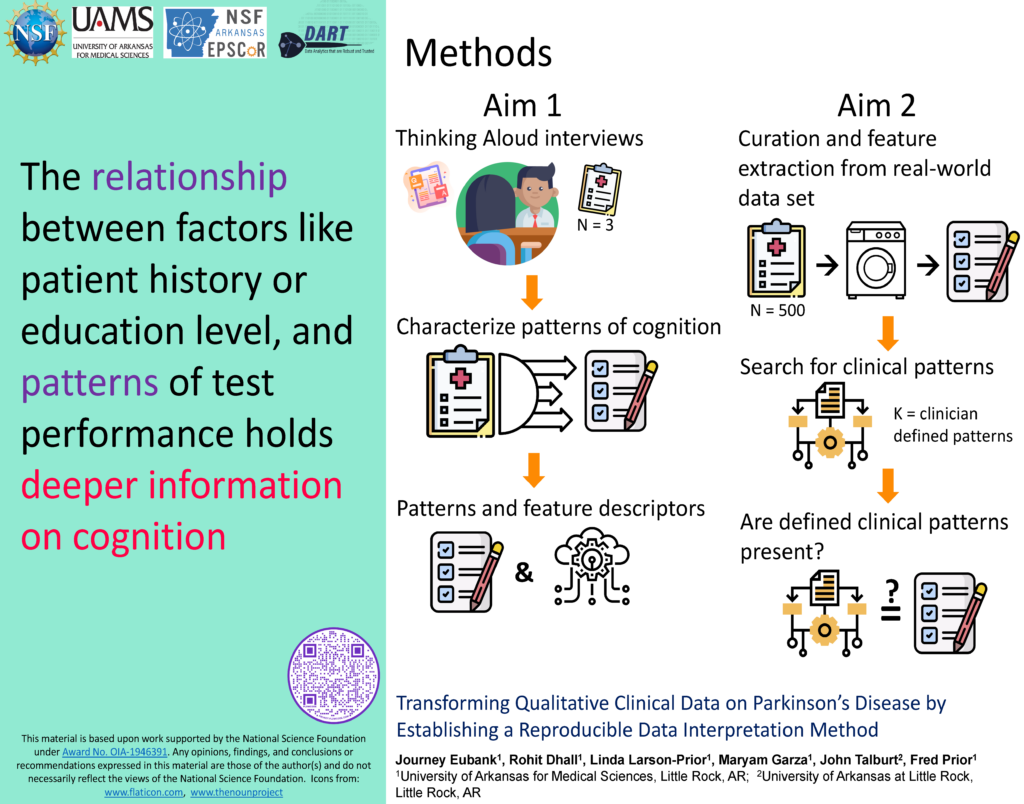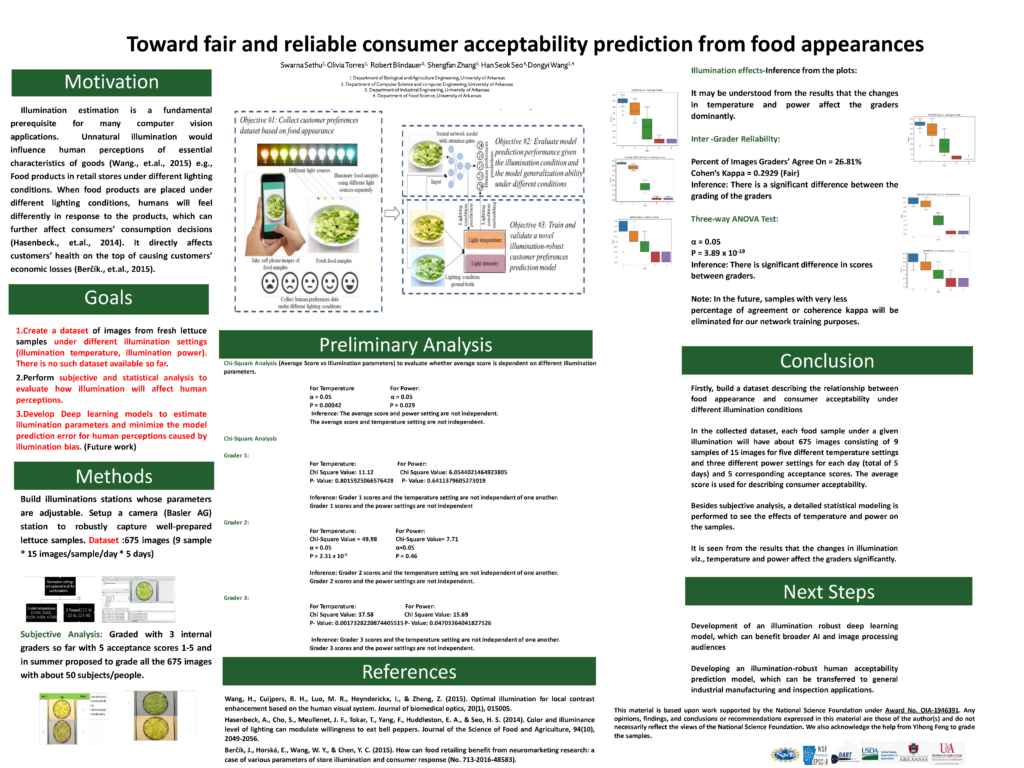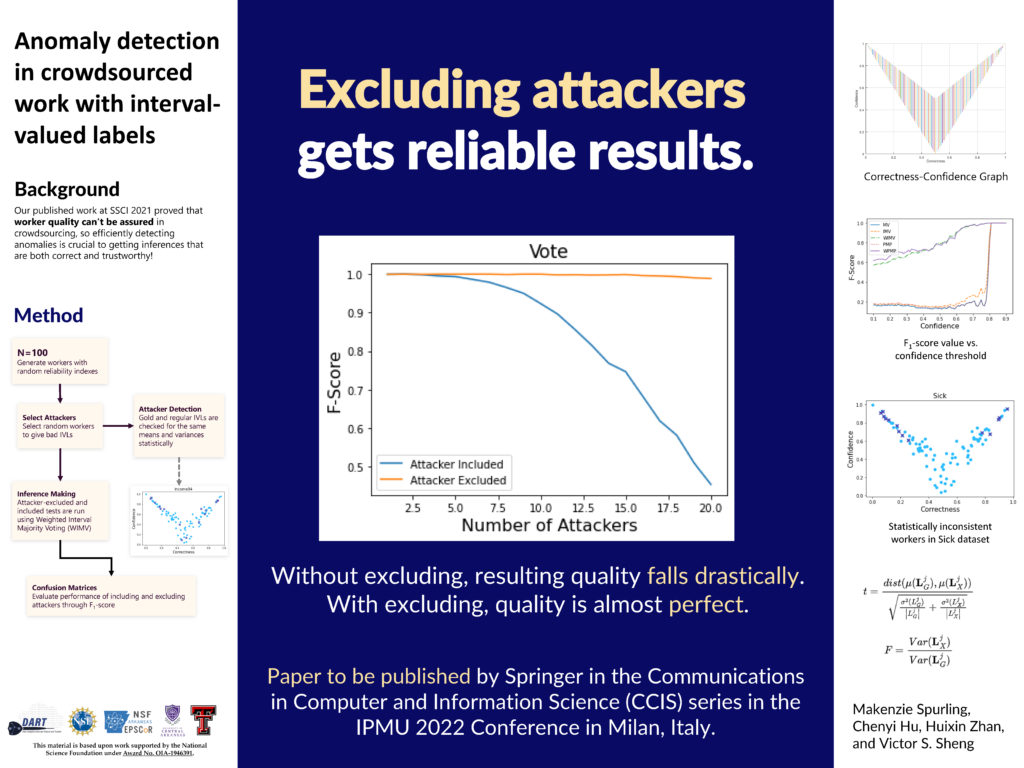We are pleased to present the submissions from our project undergraduate and graduate level students. The projects span a variety of topics and disciplines. We believe that effective science communication is more important now than it ever has been. We challenged our students to embrace #BetterPoster principles in creating their presentations.
Here are the guidelines that were given to the students:
Students were strongly encouraged to present a physical #BetterPoster style poster during the conference to compete for travel awards and network with our external advisory board members. A template was provided.
First, Second, and Third Place winners were selected in both undergraduate and graduate categories. The winners were announced the morning of Tuesday, May 17, 2022 during the All-Hands Annual Meeting. All students who submitted presentations receive a certificate of completion, and the winners receive travel awards to present their work at relevant regional and national conferences.
2022 Winners
- Grad 1st: Fumiko Kobayashi, UALR
- Grad 2nd: Swarna Sethu, UAF
- Grad 3rd: Kristopher Johnson, SAU
- Undergrad 1st: Abby Willard, UAF
- Undergrad 2nd: Aaron Moody, UCA
- Undergrad 3rd: Tie – Betül Ensari, ATU & Sky Wess, SAU
How to Claim Your Prize!
For questions on how to redeem your prize, please contact Cathy Ma at the central office (cma@arkansasedc.com).
Graduate Students: Each student wins a travel award to attend the 2023 National NSF EPSCoR Annual Conference in Portland, Maine. The conference will take place November 13-16, 2022. Students should plant to present their poster during the conference poster session.
Undergraduate Students: Each student wins a travel award (1st place = $1,000; 2nd place = $750; 3rd place = $500) to attend and present their poster at a domestic conference of their choice. Students must file paperwork in advance with the central office.
